Muscle Tightness and Joint Injury, Prevention and Cure
Muscle Tightness and Joint Injury, Prevention and Cure
At some point in our lives, most of us suffer from some sort of tightness in our muscles that manifests itself as joint pain. By this I don’t mean anything as serious as arthritis for example, more a restriction in our range of movement or an acute pain upon movement. This article will address muscle tightness and joint Injury, prevention and cure, providing you with a few simple examples and cures.
In lots cases muscle tightness and joint injury is merely a symptom of our lifestyle – not enough movement, repetition of particularly damaging movements, poor posture, unsuitable working environment etc, but there are ways you can correct these.
We should all include some sort of prehabilitation in our training. Spending a few minutes each week to improve our mobility will pay dividends – it will reduce injury risk, improve joint health, improve movement and improve exercise technique. All of these are important – more than ever as we age. Natural joint and soft tissue degradation means that joints are really susceptible to premature ageing unless properly cared for.
There are a number of reasons why our mobility reduces over time, some of which are easily rectifiable. Our working positions, our sleeping positions, our habits etc can all be adjusted to protect and promote mobility. Luckily muscle tightness and joint injury can be avoided relatively easily.
This article will identify a few of the more common areas of muscle tightness and joint injury, the pain it can cause and how you can rectify the problem.
Disclaimer: I am not a qualified physiotherapist, so this advice is not meant to be diagnostic or clinical. These are merely strategies you may wish to try before seeing a qualified physiotherapist, to see if your problem is something simple and easy to correct.
Here is a list of common areas of muscle tightness, the injuries they produce and what to do about them.
Hip Flexors
Tight hip flexors are often responsible for lower back pain. These muscles help the leg to flex at the hip (the clue is in their title), bringing the knee towards the torso. Typically, people who sit at a desk or drive for long periods of time keep their hip flexors in a contracted position for a long time which can lead to a tightening and shortening of the muscle. For this reason, if you have a desk or car-bound job, take regular breaks to walk around and stretch out to act as insurance against lower back pain.
Anyone who has ever cycled or ran for a length of time and has suffered lower back pain as a result could benefit from a hip flexor stretch. A tight hip flexor acts on the pelvis by tipping it forwards which can result in lower back pain. A thorough stretching session or two will usually ease this pain. In order to keep it at bay, you will need to perform regular stretching of the hip flexors (assuming the pain is merely down to tight hip flexors).
To stretch the hip flexors, assume a kneeling lunge position and lean forward until you feel a stretch from the hip down towards the knee, as shown is this picture of me whilst on a 165 mile training ride in 2010! (The hip flexor being stretched here is the right side).
Hamstrings
Tight hamstrings are another possible cause of lower back pain. Again, these muscles are attached directly to the pelvis and can cause chronic pain when tight. The action of the hamstrings are to allow the leg to flex (bend) at the knee, bringing the heel towards the bum.
These muscles can tighten for a whole host of reasons – sitting too much, over-use through cycling or running, not rehabilitating an old injury properly and often, simply a lack of sufficient stretching activity. In movement terms, the hamstrings are essentially the ‘brakes’ of the body when we run, which is often why sprinters suffer from hamstring problems – they have a strength imbalance between the quads at the front of the thigh and the hamstrings at the back, and the force difference is too much for the hamstrings to cope with, causing damage.
To stretch the hamstrings, merely bending at the waist and keeping your leg straight will do the job. If you suffer from tight hamstrings, stretch them 3-5 times per day to keep them supple.
ITB
The iliotibial band is also known as the ITB – a band of connective tissue running down the lateral side of the leg. The ITB attaches to the outside of the knee.
When repetitive exercise such as jogging is performed, the ITB can tighten over time. This has a shortening affect on the tissue and the resulting tension pulls on the attachment site at the knee. This will cause a pain in side of the knee after a few minutes of exercise and will not go away. If you only suffer from the side-knee pain when exercising and not during everyday movement, there is a very good chance it is ITB related.
The way to remove this pain is to use a foam roller or vibration plate on the area as often as possible – this will have the effect of lengthening the ITB, reducing the tension and removing the pain at the knee. Having suffered with ITB pain myself, I used this method once and have not suffered since, and I had it in 2009!
Personally I found stretches next to useless for dealing with ITB pain and massage, foam rolling and vibrogym massage to be excellent at curing the problem.
Shoulders
One of the saddest things I see in the gym is scores of young guys training their beach muscles in the hope of impressing the girls. Set after set of bench presses, bicep curls and shoulder presses, all in the hope of building a bigger chest, shoulders and arms. The problem here is that they are doing lots of pushing and not much pulling – this strengthens and tightens the pectoral muscle group of the chest, and the neglect of the back leaves it weak and loose.
These factors combined result in a muscle imbalance around the shoulder that can cause muscle tightness and joint injury – in particular with the shoulder and upper back.
Now before we go any further, some people wrongly identify this as a rotator cuff tear – leave that to the diagnostic skills of a qualified physiotherapist or clinician. Before you explore any medical route, try a few stretches and exercises to see if your problem is something less serious.
My favourite way to stretch the pectoral muscles is to use a TRX or a cable station. Assume a high press up position and lean forward, stretching the chest. Maintain this position for up to 1 minute, ensuring you can feel a stretch throughout.
Combine this stretch with exercises to target the upper back and rear deltoids (back of the shoulders) and see if your pain eases. If it doesn’t ease after two weeks, your best bet would be to see a physiotherapist for a more in-depth assessment.
So there are a few of the more common complaints I see in the gym that can be dealt with quite easily, just by adjusting your programming and training smarter.
Additional preventative measures include….
Foam Rolling
There are various videos on effective foam rolling to be found on youtube. In time I will write a post on it myself and add my own videos, but effective foam rolling will help you avoid most of the muscle-related joint pain discussed here.
There are lots of foam rollers on the market, but this is the one I use and have found it to be ideal….
Stretching
When it comes to muscle recovery and injury prevention, stretching is a very useful and worthwhile tool. Stretch after a gym session to prevent chronic muscle tension and possible pain.
Training Smart
Train the body in balance – make sure that you include push exercises, pull exercises, hip dominant, knee dominant, rotational and gait exercises. Avoid too much running and cycling, but if you must do these activities, stretch thoroughly afterwards.
Nutrition
A final insurance policy against injury can be found in your nutrition. Take fish oils, hydrate well and avoid grains as they are pro-inflamatory. Eat good quality protein and plenty of vegetables!
Remember, always, your first goal in the gym should be TO DO NO HARM! I want to stress this point as far too often I come across people who wrongly assume the more pain you feel during and after your workout, the better it is.
If you want to keep your doctor in his Porsche, go ahead and beat yourself up. If you want to be able to walk when you are 50, think a little more deeply about your training.
If you are suffering from any pain, take a look at what you do and see if these strategies will help. It may be something really simple that is causing you pain! Muscle tightness and joint injury go hand in hand – look at your routine, in particular with regards to balance and stretching and reap the fitness and injury prevention benefits.
By the way, I’ve now started a VIP email list with discounts, offers, tips and news. You can subscribe at on my homepage! Click here to sign up (blue box at the bottom).
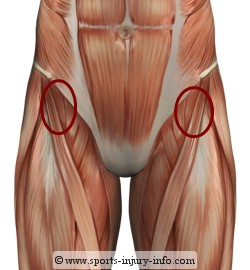

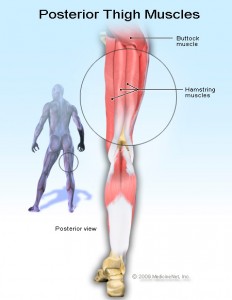
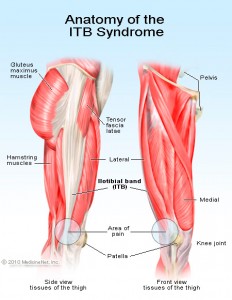
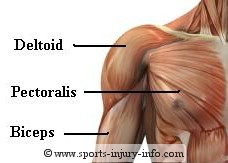
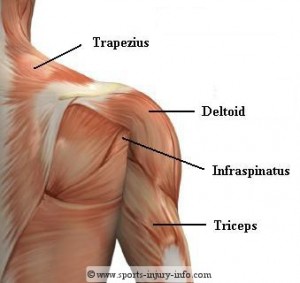

Acute pain might be mild and last just a moment, or it might be severe and last for weeks or months. In most cases, acute pain does not last longer than six months, and it disappears when the underlying cause of pain has been treated or has healed. Unrelieved acute pain, however, might lead to chronic pain.
That’s true, Billy.
The article outlines a few first-line tactics to prevent, manage or cure injury.